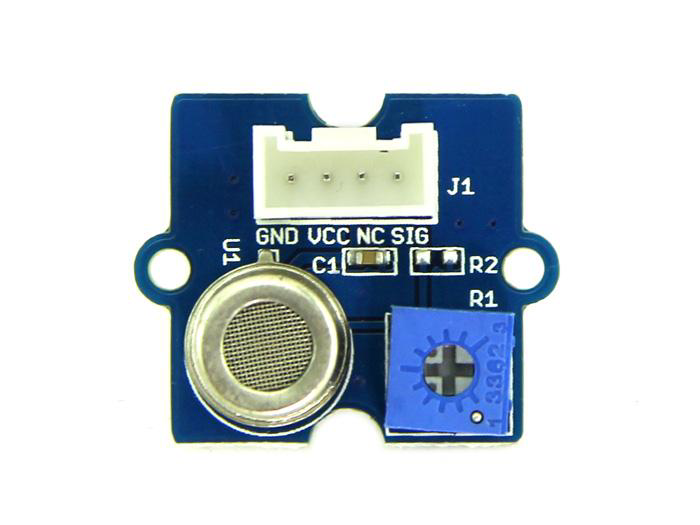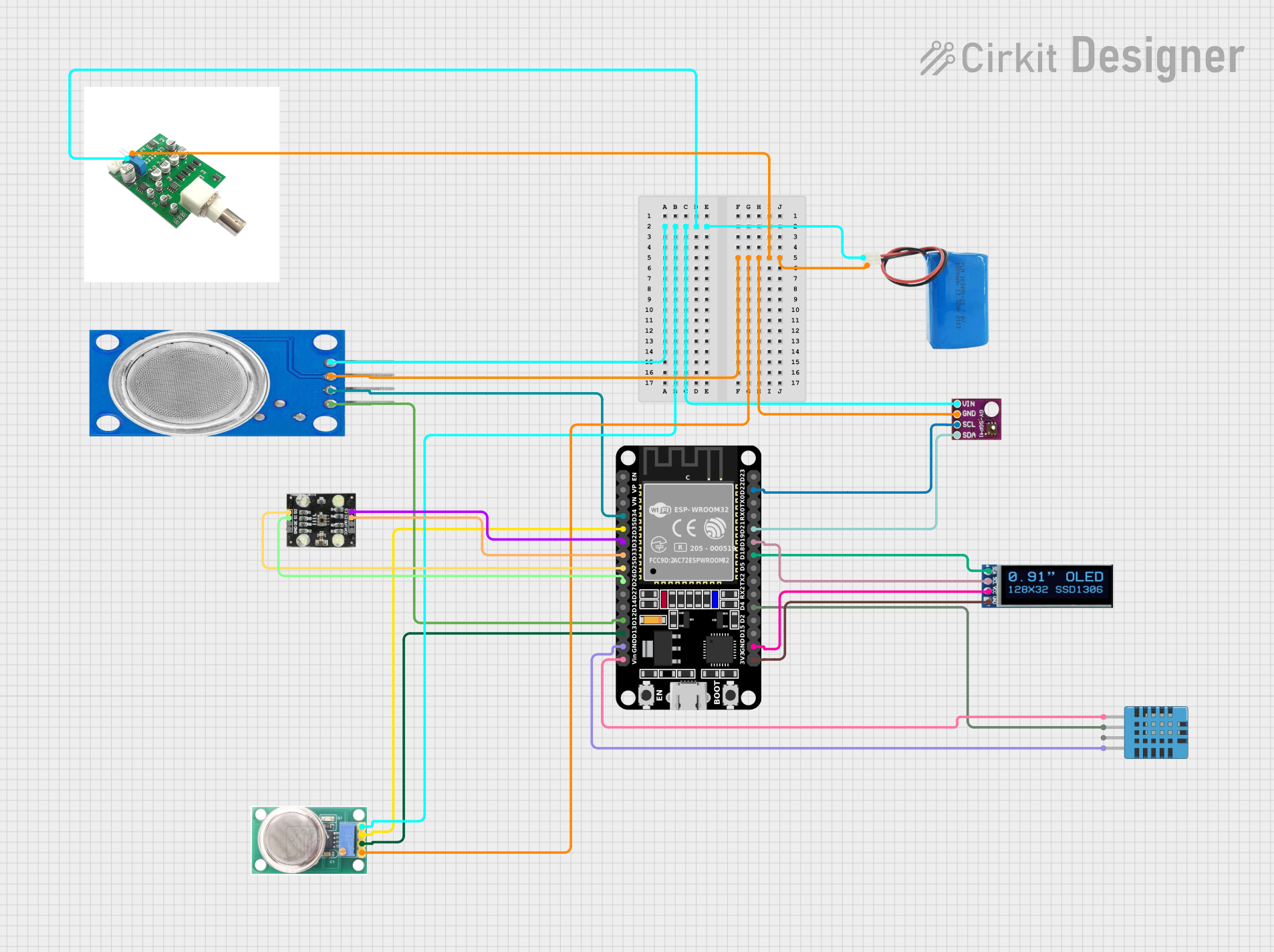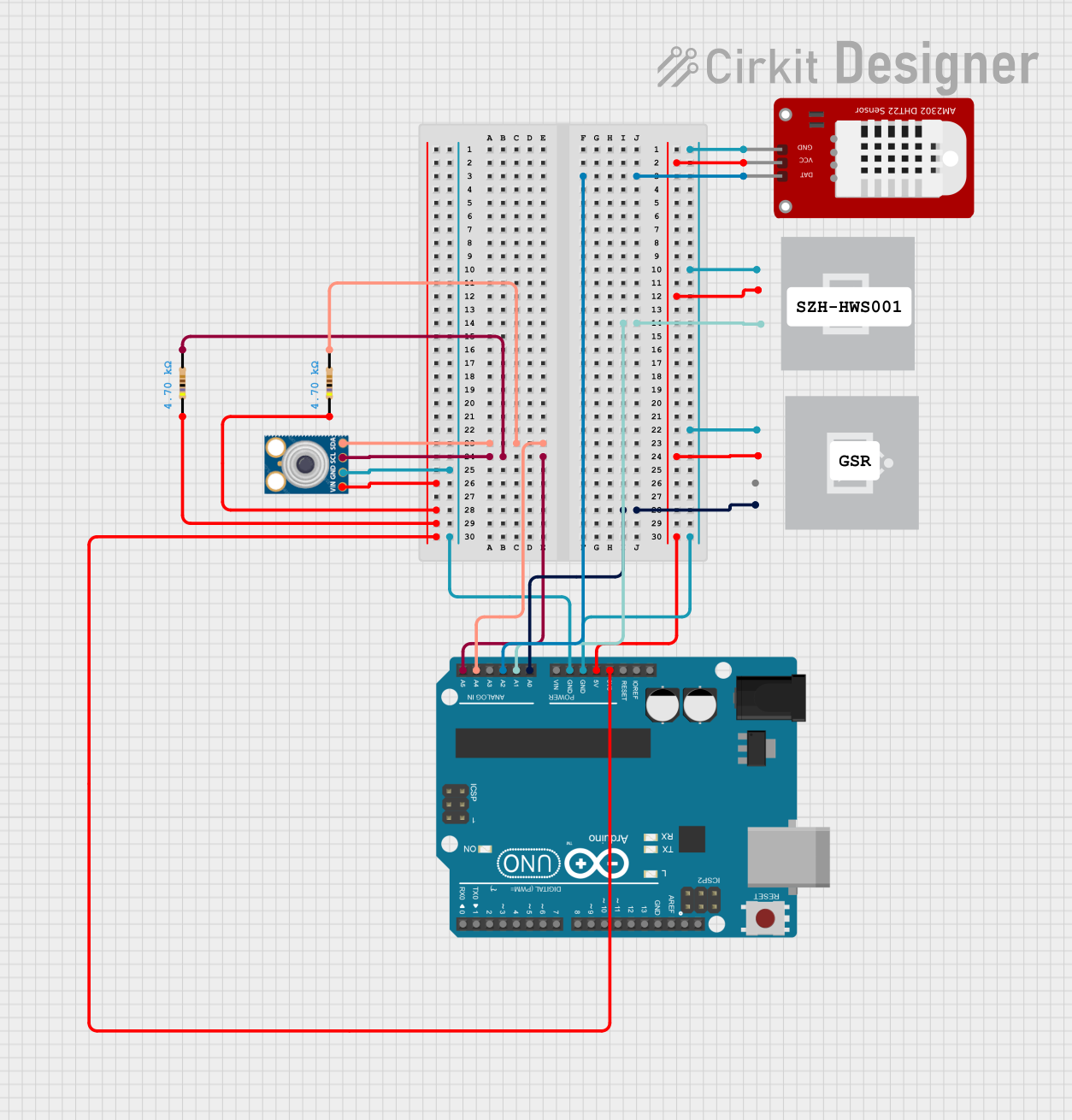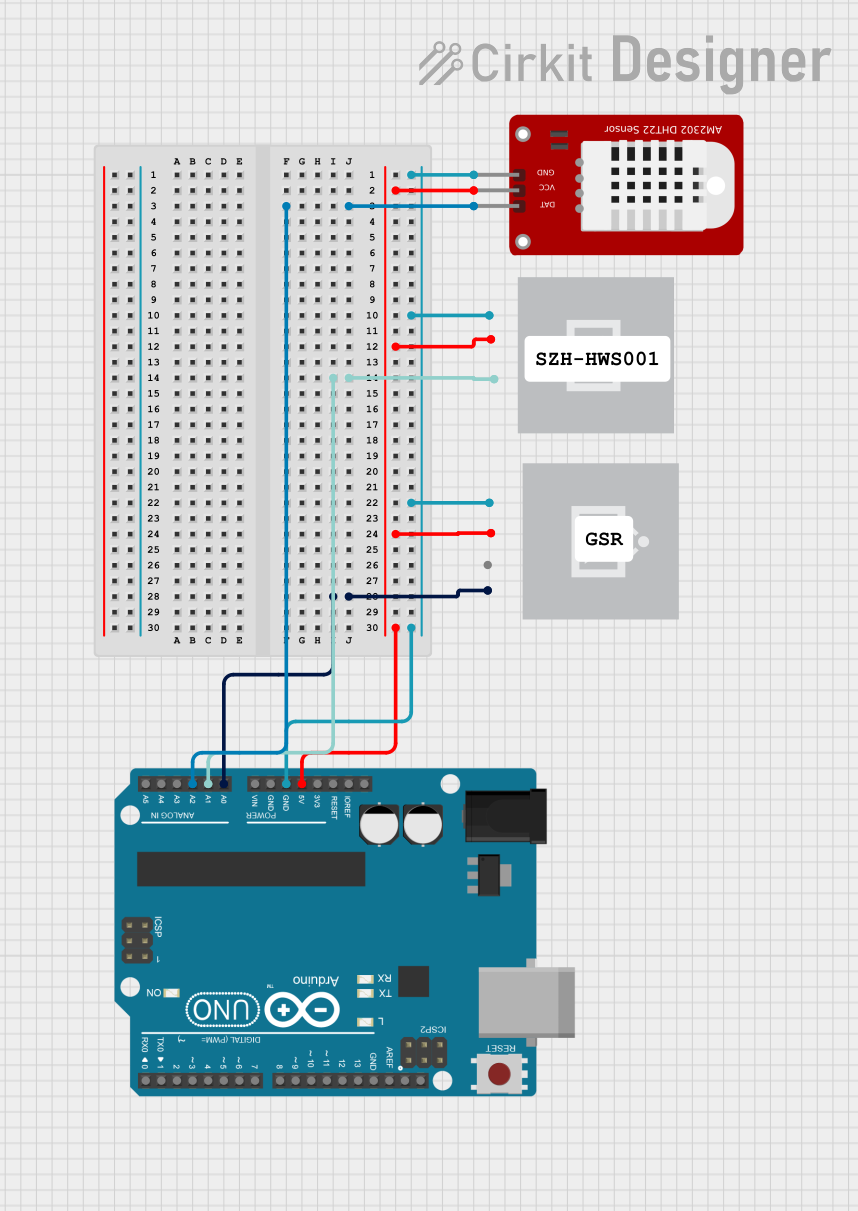
How to Use Grove - HCHO Sensor: Examples, Pinouts, and Specs

 Design with Grove - HCHO Sensor in Cirkit Designer
Design with Grove - HCHO Sensor in Cirkit DesignerIntroduction
The Grove - HCHO Sensor is a compact and efficient module designed to detect and measure the concentration of formaldehyde (HCHO) in the air. Formaldehyde is a common indoor air pollutant, and this sensor provides real-time data to help monitor air quality effectively. It is based on an electrochemical sensing technology, ensuring high sensitivity and accuracy. The module is part of the Grove ecosystem, making it easy to integrate with various microcontrollers and development platforms.
Explore Projects Built with Grove - HCHO Sensor

 Open Project in Cirkit Designer
Open Project in Cirkit Designer
 Open Project in Cirkit Designer
Open Project in Cirkit Designer
 Open Project in Cirkit Designer
Open Project in Cirkit Designer
 Open Project in Cirkit Designer
Open Project in Cirkit DesignerExplore Projects Built with Grove - HCHO Sensor

 Open Project in Cirkit Designer
Open Project in Cirkit Designer
 Open Project in Cirkit Designer
Open Project in Cirkit Designer
 Open Project in Cirkit Designer
Open Project in Cirkit Designer
 Open Project in Cirkit Designer
Open Project in Cirkit DesignerCommon Applications and Use Cases
- Indoor air quality monitoring
- Smart home automation systems
- Industrial safety and environmental monitoring
- Educational projects and prototyping
- IoT-based air quality solutions
Technical Specifications
The following table outlines the key technical details of the Grove - HCHO Sensor:
| Parameter | Value |
|---|---|
| Operating Voltage | 3.3V to 5V |
| Output Signal | Analog voltage |
| Detection Range | 0 to 5 ppm (parts per million) |
| Sensitivity | 0.1 ppm |
| Response Time | < 30 seconds |
| Operating Temperature | -20°C to 50°C |
| Operating Humidity | 15% to 90% RH (non-condensing) |
| Dimensions | 40mm x 20mm |
Pin Configuration and Descriptions
The Grove - HCHO Sensor uses a standard 4-pin Grove connector. The pin configuration is as follows:
| Pin | Name | Description |
|---|---|---|
| 1 | VCC | Power supply (3.3V to 5V) |
| 2 | GND | Ground |
| 3 | SIG | Analog output signal proportional to HCHO level |
| 4 | NC | Not connected |
Usage Instructions
How to Use the Component in a Circuit
- Connect the Sensor: Use a Grove cable to connect the sensor to an analog input port on a Grove Base Shield or directly to a microcontroller.
- Power the Sensor: Ensure the sensor is powered with a voltage between 3.3V and 5V.
- Read the Output: The sensor outputs an analog voltage signal proportional to the concentration of formaldehyde in the air. Use an ADC (Analog-to-Digital Converter) to read the signal.
- Calibrate the Sensor: For accurate measurements, calibrate the sensor in a clean air environment to establish a baseline reading.
Important Considerations and Best Practices
- Preheat the Sensor: Allow the sensor to warm up for at least 5 minutes after powering it on to ensure stable readings.
- Avoid Contamination: Keep the sensor away from liquids, dust, and other contaminants that could affect its performance.
- Ventilation: Ensure proper airflow around the sensor for accurate detection.
- Calibration: Periodically recalibrate the sensor to maintain accuracy, especially in environments with fluctuating air quality.
Example Code for Arduino UNO
The following example demonstrates how to use the Grove - HCHO Sensor with an Arduino UNO to read and display the formaldehyde concentration:
// Include necessary libraries
const int sensorPin = A0; // Connect SIG pin to analog pin A0
float voltage; // Variable to store the sensor output voltage
float hchoConcentration; // Variable to store the HCHO concentration in ppm
void setup() {
Serial.begin(9600); // Initialize serial communication at 9600 baud
pinMode(sensorPin, INPUT); // Set the sensor pin as input
}
void loop() {
// Read the analog voltage from the sensor
int sensorValue = analogRead(sensorPin);
// Convert the analog value to voltage (assuming 5V reference)
voltage = sensorValue * (5.0 / 1023.0);
// Convert voltage to HCHO concentration (example conversion factor)
// Note: The conversion factor depends on the sensor's datasheet
hchoConcentration = voltage * 10.0; // Example: 1V = 10 ppm
// Print the results to the Serial Monitor
Serial.print("Voltage: ");
Serial.print(voltage);
Serial.print(" V, HCHO Concentration: ");
Serial.print(hchoConcentration);
Serial.println(" ppm");
delay(1000); // Wait for 1 second before the next reading
}
Troubleshooting and FAQs
Common Issues and Solutions
No Output Signal:
- Cause: Incorrect wiring or loose connections.
- Solution: Verify the connections and ensure the sensor is properly connected to the microcontroller.
Inaccurate Readings:
- Cause: Sensor not calibrated or exposed to contaminants.
- Solution: Calibrate the sensor in a clean air environment and ensure it is free from dust or liquids.
Slow Response Time:
- Cause: Insufficient airflow around the sensor.
- Solution: Improve ventilation or place the sensor in an area with better airflow.
Fluctuating Readings:
- Cause: Electrical noise or unstable power supply.
- Solution: Use a stable power source and add decoupling capacitors if necessary.
FAQs
Q1: Can the sensor detect other gases besides formaldehyde?
A1: The sensor is specifically designed for formaldehyde detection. While it may respond to other gases, the readings will not be accurate.
Q2: How often should I calibrate the sensor?
A2: Calibration frequency depends on usage and environmental conditions. For consistent accuracy, calibrate the sensor every 1-2 months.
Q3: Can I use the sensor outdoors?
A3: The sensor is designed for indoor use. Outdoor use may expose it to extreme conditions, reducing its lifespan and accuracy.
Q4: What is the lifespan of the sensor?
A4: The sensor typically lasts for 2-3 years under normal operating conditions.